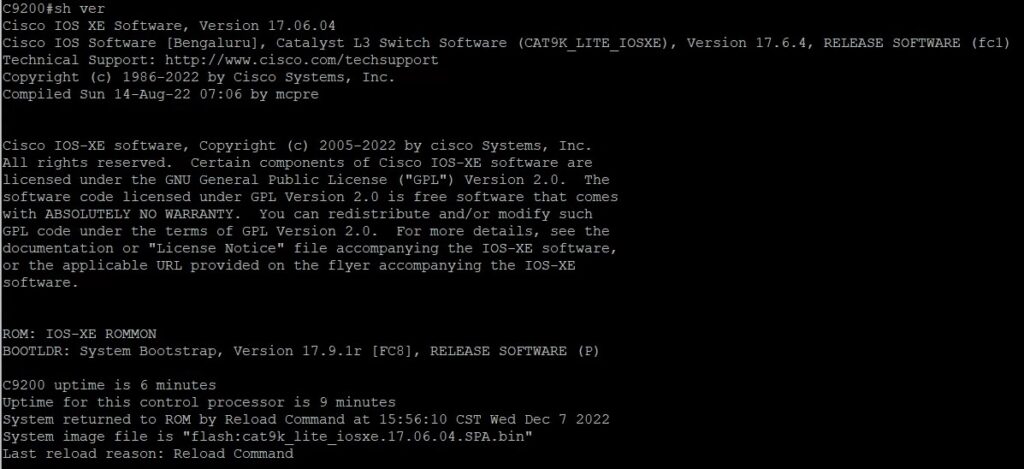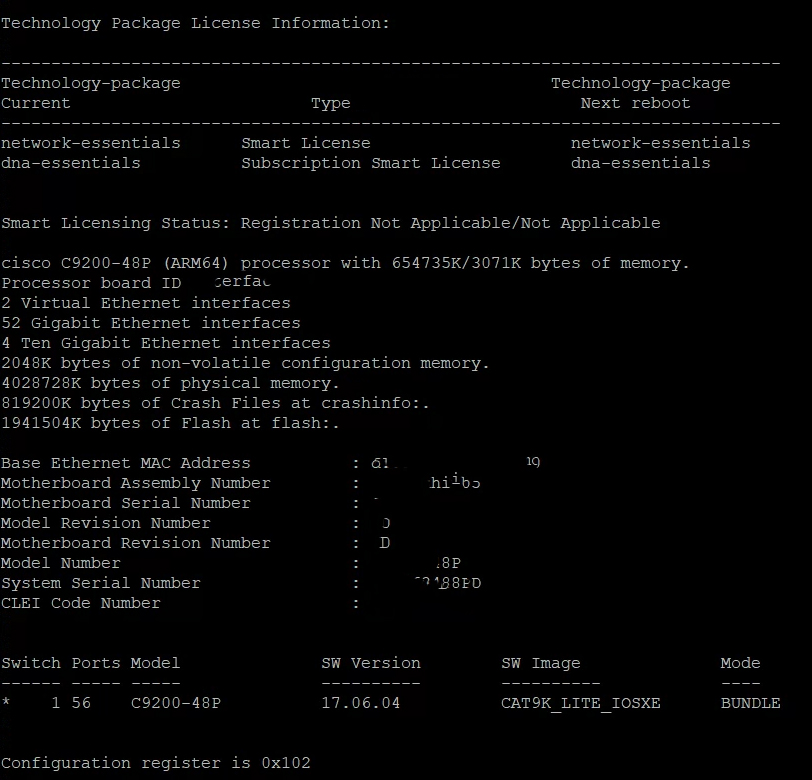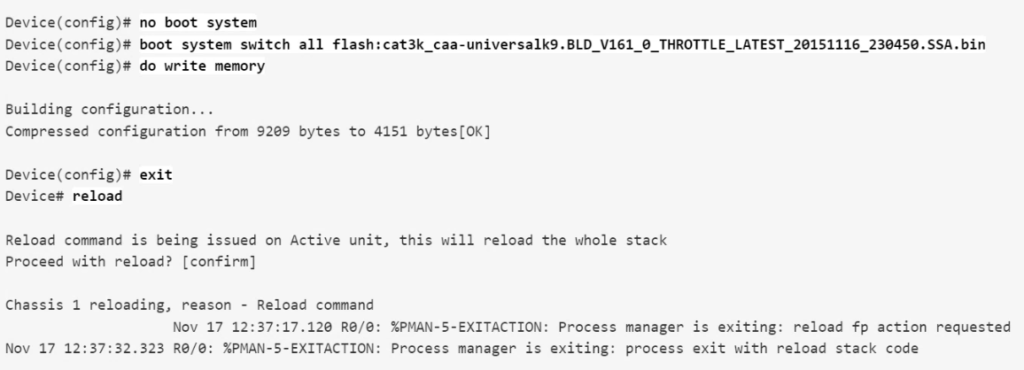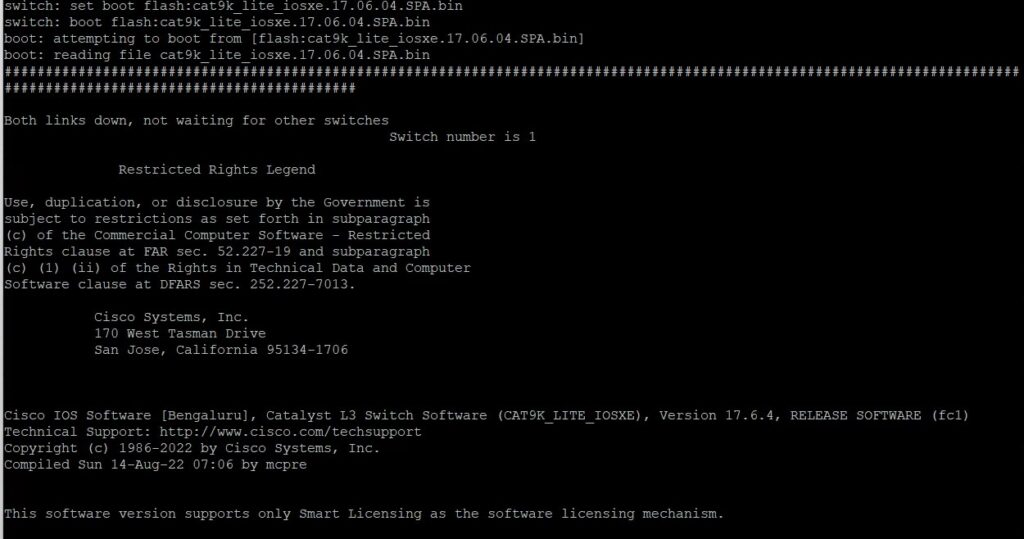Most Cisco Catalyst Switches have two modes of operation, Install mode and Bundle mode.
Prerequisites for Install Mode Versus Bundle Mode
All the switches in the switch stack should be running at the same license level as the active switch.
Restrictions for Install Mode Versus Bundle Mode
The Install mode and the Bundle mode of operation have the following restrictions:
Booting from a USB driver or TFTP in Install mode is not supported.
Booting the switch in Bundle mode consumes more memory than the Install mode because the packages are extracted from the bundle and copied to the RAM.
Auto-upgrade feature is disabled by default and is not available in the Bundle mode.
Install Mode
The Install mode uses a package-provisioning file named packages.conf in order to boot a switch. In addition, there are a number of .pkg files in the flash drive. We recommend that you do not alter the packages.conf and .pkg files unless directed by a Cisco Technical Assistance Center (TAC) engineer. Install mode is the newer and recommended mode to run. This breaks the .bin file up into smaller .pkg files that must be loaded into memory independently of each other, and allows you to boot faster and utilize memory better. The .bin file that you download from software.cisco.com has all the .pkg files you need inside.
Bundle Mode
The Bundle mode uses monolithic Cisco IOS images to boot a switch. The Bundle mode consumes more memory than the Install mode because the packages are extracted from the bundle and copied to RAM. You boot a .bin file that contains everything you need to run the Cisco IOS. As per traditional Cisco IOS, you have a boot statement that points to the .bin file you want to load and that gets loaded at the time of boot.
How to verify the Mode of Operation
Switch>Enable
Switch#show version
Switch#end


How to convert from Install Mode to Bundle Mode
>enable
Displays the contents of the BOOT variable, the name of the configuration file pointed to by the CONFIG_FILE variable, the contents of the BOOTLDR variable, and the configuration register setting.
#show version

The Mode is Install now
#show boot

Displays the contents of the BOOT variable, the name of the configuration file pointed to by the CONFIG_FILE variable, the contents of the BOOTLDR variable, and the configuration register setting.
#no boot system
Removes the startup system image specification. Note: Ensure that the .bin file of the Cisco IOS version to be used is loaded before using the no boot system command.
#boot system switch all flash
Updates the boot variable on all the switches in the stack.
#exit
#Write memory
#reload

#show version

The Mode ins Bundle now.
Another way is booting from bundle mode.
switch:set boot flash:cat9k_lite_iosxe.17.06.04.SPA.bin
switch:boot flash:cat9k_lite_iosxe.17.06.04.SPA.bin

How to convert from Bundle Mode to Install Mode
#show version

It is Bundel mode now.
#show boot
Displays the contents of the BOOT variable, the name of the configuration file pointed to by the CONFIG_FILE variable, the contents of the BOOTLDR variable, and the configuration register setting.
#request platform software package expand
Expands individual Cisco IOS XE software packages and the provisioning file from a specified bundle to a specific destination directory.